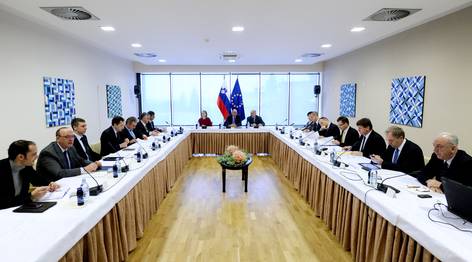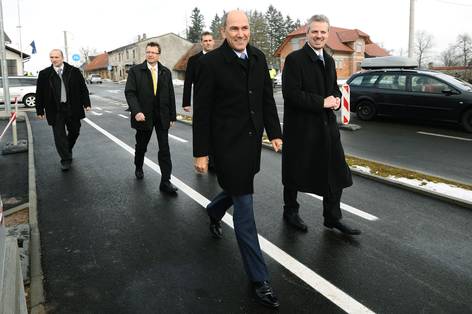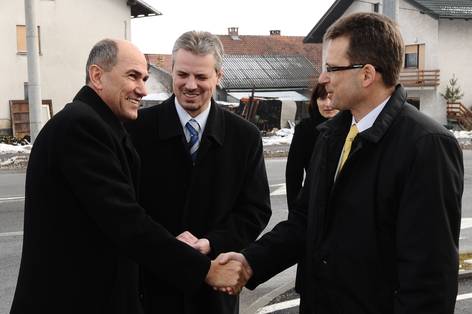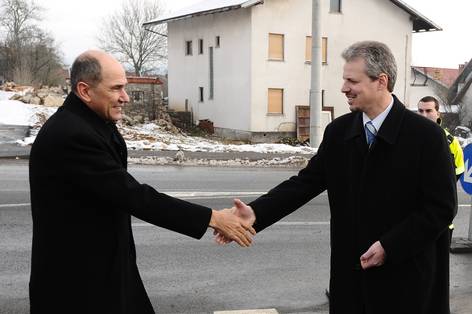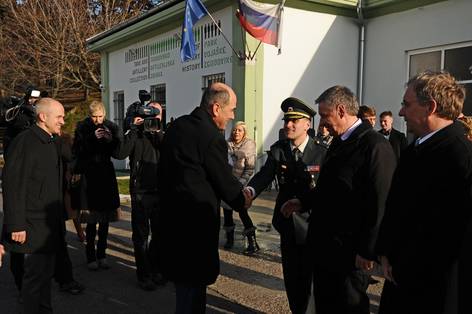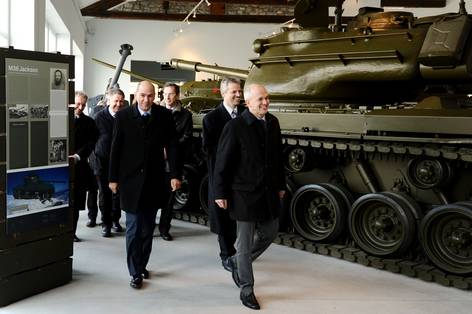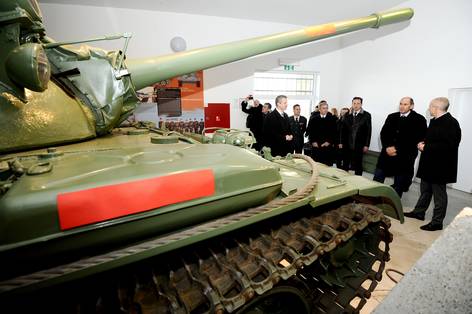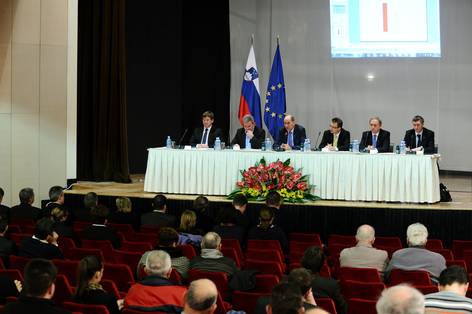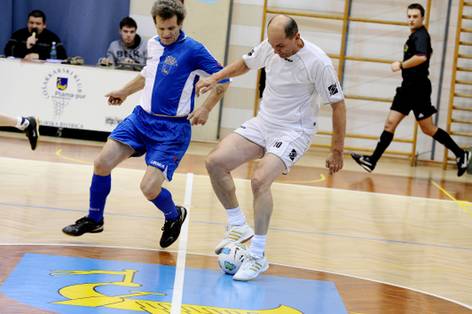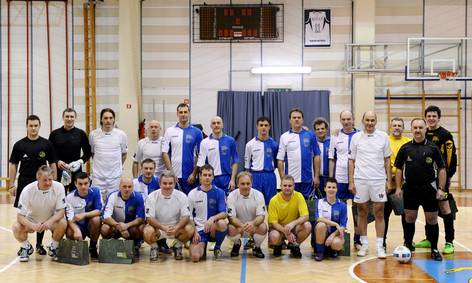NEWS
Slovenian Prime Minister Janša after his visit to the Notranjsko-kraška region: "The Government visits people in order to solve their problems"
"Wood processing industry is one of the industries with the highest potential in this region. As Slovenia ranks third among the European countries in terms of forest cover, wood constitutes an unexploited wealth, " said Prime Minister Janez Janša on the second day of the visit of the Government of the Republic of Slovenia to the Notranjsko-kraška region. He stressed that the region, although small and with low population density and high unemployment, shows numerous signs of recovery: "The development shifts in the region in the recent years are visible especially in the resolution of infrastructural problems, which is a solid basis for the further industrial development of the region. "
The development of the wood processing technology was the main focus of the Government at today’s panel discussion, as it had, already in June 2012, adopted the Action plan to increase the competitiveness of the forest-wood chain in Slovenia by the year 2020, which determines the strategy of development and revitalisation of the wood processing industry and forest management,.
Prime Minister Janez Janša added that the intention of the visits to regions remains the resolution of problems of the local population by directly examining the situation and making contacts with people in the regions. "We have resolved certain administrative barriers and prepared regulations already in the course of the preparations for this visit. Municipalities, local communities and the Government are signing certain agreements while others are to be drafted," said Prime Minister Janša about the situation he encountered and added that although some promises made on the occasion of the last Government’s visit in 2008 had not been fulfilled, they were being considered again. "The Government visits people in order to solve their problems. By direct examination, all written strategies acquire their meaning when they are actualised and being implemented, " stressed the Prime Minister.
In Prime Minister Janša’s opinion, numerous possibilities and economic development incentives are opening for the future development of the Notranjsko-kraška region. Besides the current financial perspective, there is also the future financial perspective and entrepreneurial tenders for which the budgets for 2013 and 2014 earmark more resources than in the previous years. "There is sufficient know-how and potential to accelerate all fund drawing procedures; this process should, however, actively include municipalities and other local institutions," said Prime Minister Janez Janša.
In the morning, the Prime Minister led the opening of the reconstructed road through the village of Petelinje near Pivka which will now be much safer for children and other traffic participants. The Minister of Infrastructure and Spatial Planning, Zvone Černač, said upon the opening that the value of the investment in the length of nearly one kilometre amounts to almost a million euro. The road, which got a pavement and a cycling route, is now safer and more stable. The new projects adopted by the Government in the first three months contained the spending, but not on the account of investments. The drawing of the European funds for the reconstruction of roads and infrastructure doubled in the last year in comparison to 2011.
After the ceremony at Petelinje, Prime Minister Janez Janša visited the Park of Military History, where a complete reconstruction of the park complex is going on. The reconstruction, co-financed from the EU funds, is led by the Pivka Municipality in cooperation with the Ministry of Education, Science, Culture and Sport, the Ministry of Economic Development and Technology and the Ministry of Defence. The value of the project is 13.3 million euro excluding VAT. The Pivka Park of Military History presents a collection of national importance and is part of the public infrastructure in the field of culture in the Pivka municipality. In view of its development so far, the Park of Military History is an important contribution to the preservation of historical and technical heritage of the military at the national level as well as to the enhanced patriotic awareness. In addition, it significantly complements the tourist offer in the Notranjsko-kraška region as well as on the national scale. By several indicators, the Park of Military History is the fastest growing museum in Slovenia and the leading museum of Slovenia in terms of media publications in 2011. At the same time, it is the most successful example of cooperation between the Slovenian Armed Forces and the local community. The head of the Park project Janko Boštjančič said in the course of the visit that the museum was located in the deserted army barracks where the aggression of the Yugoslav army on the newly independent Slovenia began in 1991. The particular emphasis in the museum is put on these collections.
At the afternoon meeting with mayors, business people, deputies and councillors in Ilirska Bistrica, the discussion focused especially on the numerous development opportunities in Notranjska which have been so far left unexploited. "When I visited the region five years ago, one of the main problems was labour shortage. Although there is still a shortage of engineers in the metal processing industry, the unemployment is much higher than on my visit five years ago and the general situation has aggravated," summarised Prime Minister Janez Janša. Namely, Notranjska is the region where salaries are below average and where many inhabitants commute to work elsewhere in Slovenia. The investments in the last few years have been rather sparse and since Slovenia is still in the stage of exiting the financial and economic crisis, we cannot expect considerable improvements as regards the possibilities of domestic investments. Nevertheless, Prime Minister Janša remains optimistic as "Slovenia can change the trends by the end of the year, if only it does not put up obstacles to itself. Better times are coming and this brings better prospects. " EU funds are a particular opportunity for the Notranjska region. "In the financial perspective which ends this year, Slovenia has at its disposal several millions that can be drawn even in the future years, " explained the Prime Minister and added that additional candidacies for these funds will be possible. 2014 marks the beginning of the new EU financial perspective in which a few billion euro will be earmarked for Slovenia. These resources will be theoretically available immediately and we will not have to wait for drawing and investing until 2020. "The sooner we prepare appropriate schemes, the sooner the funds will be available," was the Prime Minister's advice to the local business people.
The Prime Minister also touched upon the decision of the Ilirska Bistrica municipality to move from the Notranjsko-kraška to the Primorska region. "Although the Government will fully respect this decision, I am not sure whether all consequences of such decision were put forward, " said the Prime Minister. He explained that Slovenia was statistically divided in the East and West Cohesion Region. The West Cohesion Region has already achieved the average EU development level. The development of the East Cohesion Region, however, is under 70 per cent of the EU development level. This means that the western part of Slovenia will acquire a relatively small part of the cohesion funds already in the next financial perspective, while the eastern part will be eligible for full funds. In the period from 2020 to 2027, the western part will be left with practically nothing. The eastern part, on the other hand, will be eligible for almost full cohesion funds. The decision to join the western region does not have a general impact on the period from 2014 to 2020 as the region changing procedures are complex. Slovenia must notify the European Commission and the Statistical Office of the European Communities about different changes by the end of this month.
"Notranjska, too, has companies that are successful and those that are not. Companies that got a sound foreign strategic partner have survived despite the crisis. Companies whose managements counted on ownership transformations are in big trouble. This leads to the conclusion that foreign ownership is not ‘scary’, what is ‘scary' is bad ownership," stressed Prime Minister Janez Janša. Slovenia is in need of foreign investments. The Government has done a lot to attract fresh capital and investments from abroad; at the moment, two acts are being adopted in the field of the labour market reform that will be a decisive factor in whether the inflow of foreign investments will increase or not.




